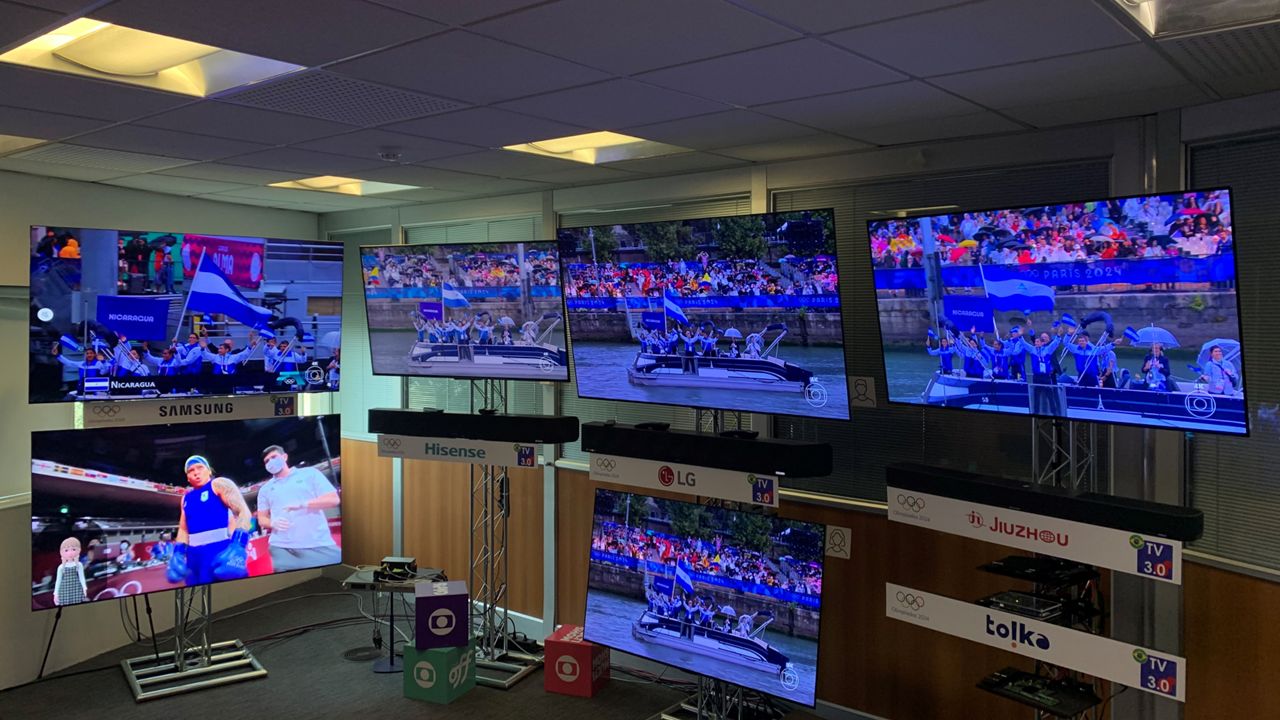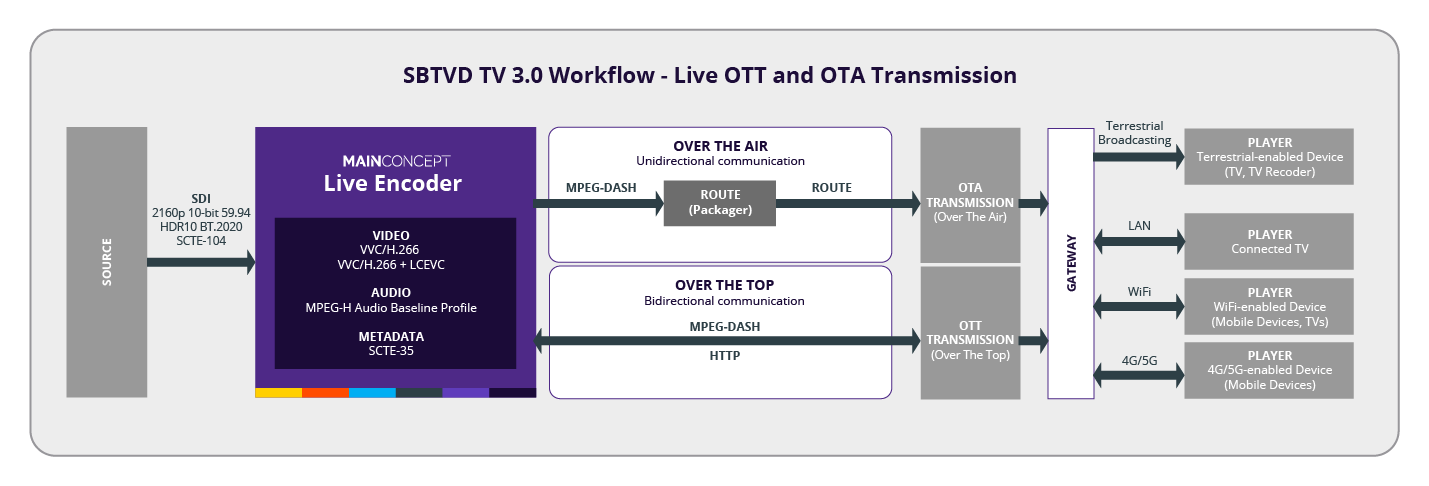Case Study: The Paris Olympics were an ideal testbed for next-generation broadcast technology

Subscribe to NCS for the latest news, project case studies and product announcements in broadcast technology, creative design and engineering delivered to your inbox.
As the world turned its attention to the Paris Olympics, the broadcast industry was once again on the frontline, tasked with delivering the most anticipated sporting event of 2024. Beyond the spectacle of the opening ceremony and the athletic accomplishments spanning 320 medal events, a true feat of achievement also happened behind the scenes, where over 1,000 cameras were busy capturing thousands upon thousands of hours of live sports coverage, for transmitting to eager viewers around the world. The monumental event was not only a showcase of athletic prowess but also a demonstration of cutting-edge broadcast technology that in time will come to redefine viewing experience as we know it.
Pioneering TV 3.0: The future of broadcasting in Brazil
As a testbed for next generation broadcast technology, this year’s games provided the perfect environment for MainConcept and its technology partners V-Nova, Fraunhofer IIS and InterDigital to work with Brazilian media company Globo to showcase the SBTVD (Sistema Brasileiro de TV Digital Terrestre) Forum’s TV 2.5 and TV 3.0 standards for delivery of broadcast content in real time. The collaboration with Globo is not new; it builds on the success of joint initiatives that began with the 2022 FIFA World Cup. The 2024 Paris Olympics provided a global stage for the next phase of this partnership, with Brazil leading the charge as the first country to deploy the VVC/H.266 codec as part of its TV 3.0 standard. Standardized by the SBTVD Forum, TV 3.0 represents the future of broadcasting in Brazil, promising to deliver higher-quality video and immersive, customizable audio experiences.

As an intermediate system leading up to the TV 3.0 standard, the SBTVD Forum has introduced TV 2.5, a standard that utilizes AVC/H.264 as its base. It is enhanced with MPEG-5 Part 2 LCEVC and Advanced HDR by Technicolor and uses MPEG-H Audio for immersive and personalized sound. This dual-standard approach ensures that, as Brazil transitions to TV 3.0, the majority of current consumer devices can still access improved broadcast quality without requiring immediate hardware upgrades. The project, which was based at Globo’s headquarters in Rio de Janeiro, was a live showcase of next-generation TV broadcasting, utilizing the MainConcept Live Encoder alongside innovations from the key technology partners mentioned previously.
Cutting edge technology behind the showcase
The Globo Paris Olympics TV 2.5 and TV 3.0 showcase featured a sophisticated setup, with MainConcept’s Live Encoder serving as the linchpin. The showcase was split into two primary demonstrations: one utilizing VVC Main 10 and another combining VVC with LCEVC. In the first scenario, a UHD (3840×2160) feed was encoded to VVC Main 10 Profile at 59.94 fps, complete with HDR10 and MPEG-H Audio. This content was then packaged for both Over-the-Air (OTA) and OTT delivery using MPEG-DASH or ROUTE DASH formats.
The second demonstration highlighted the efficiency of the LCEVC (Low Complexity Enhancement Video Coding) enhancement layer. Here, the Live Encoder created a VVC base layer at 1920x1080p, which was then upscaled to 3840x2160p using LCEVC metadata. This innovative approach resulted in significant bitrate savings, making high-resolution broadcasting more bandwidth-efficient without compromising quality.
One of the standout features of TV 3.0 is its use of MPEG-H Audio, a next-generation audio technology developed by Fraunhofer IIS. Unlike traditional audio formats, MPEG-H Audio is object-based, which enables immersive soundscapes that can be tailored to the viewer’s preferences. This technology offers sports fans an unprecedented level of immersion, enabling them to adjust audio elements, such as emphasizing the stadium sound or choosing between commentators, to enhance their viewing experience.
Blueprint for the future of global broadcasting
The Globo TV 2.5 and TV 3.0 showcase is not just a national endeavor; it has far-reaching implications for the global broadcast industry. Brazil’s SBTVD Forum’s TV 3.0 standard is the first TV broadcast standard using the VVC/H.266 codec, and the successful implementation of TV 2.5 and TV 3.0 in Brazil serves as a compelling case for other regions considering the adoption of next-generation standards. Similar efforts are already underway in the United States (ATSC 3.0), Europe (DVB), and Japan (ARIB), where the VVC/H.266 codec is being evaluated as a potential solution for future broadcast challenges, including limited bandwidth, high-resolution content, and advanced advertising capabilities.
Although it wasn’t without the challenges that you would expect when working across different countries, time zones and languages, the Globo TV 2.5 and TV 3.0 Paris Olympics showcase was a huge success. And with so many partners working together towards a common goal, the showcase’s success is testament to the power of collaboration in the broadcast industry. As the market looks towards the future, the success of this project highlights the potential of next-generation codecs like VVC/H.266 and the transformative impact they will have on how content is delivered and experienced worldwide.
Subscribe to NCS for the latest news, project case studies and product announcements in broadcast technology, creative design and engineering delivered to your inbox.




tags
2024 Summer Olympics, Brazil, Broadcast Workflow, Globo TV, international sports, live events, SBTVD Forum
categories
Case Study, Featured, Olympics, Sports Broadcasting & Production, Voices